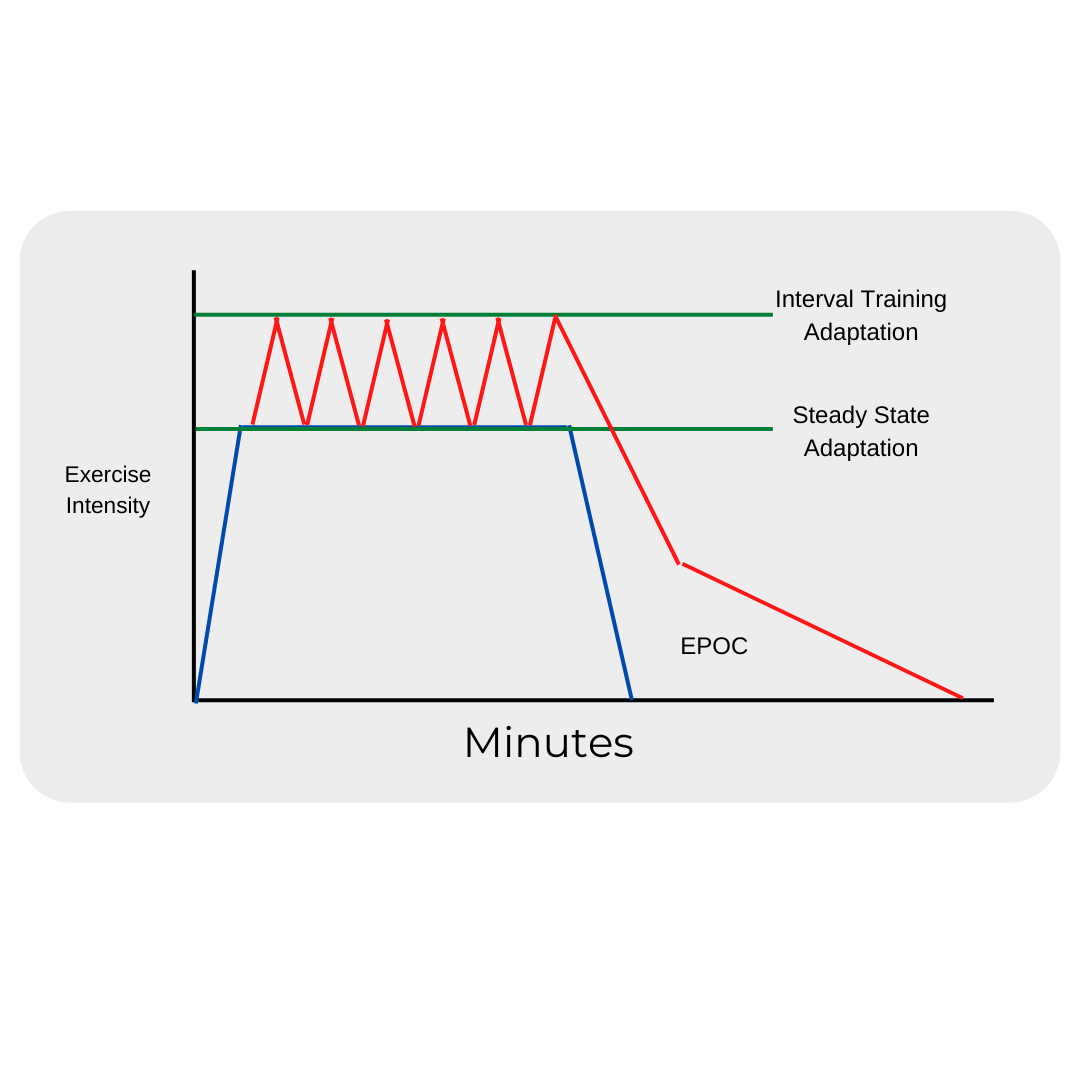
Oct 12•2 min read
Q&A: What are the benefits of short intense workouts?

I am a big fan of short intense workouts. They are the most efficient way to challenge your cardiovascular system, and when done correctly, provide ample stimulus to make you stronger, more flexible, and all-around healthier.
This answer will focus on how short, intense workouts can cause significant cardiovascular improvements.
What constitutes a high-intensity cardiovascular workout is going to either be one short maximal effort event (sub 10 minutes), or interval training (sub 25 minutes, usually sub 15 minutes).
Why would interval training be better than slow and steady cardiovascular training (e.g. zone 1 or zone 2)?
The reason is that even though you might only spend 3-5 minutes exercising at the highest intensity level, your cardiovascular system will adapt to the highest intensity level you achieved as if you were working out at that intensity the entire workout.
Visualized here:

Steady State vs Interval Training
Blue line: exercise intensity of a Zone 1 or 2 (Steady state) workout
Red line: exercise intensity of an interval workout
Area under the curve following training cessation: EPOC
A common phrase in exercise physiology is that the body will adapt to the stress that you put onto it. In this case, we want to maximize the health of our cardiovascular system by putting a good stress on the system. The higher that stress, the greater the cardiovascular adaptations.
Short intense workouts will boost cardiac output by increasing left ventricular volume (increased blood can be expelled per beat) as well as increased conduction and metabolic efficiency of the heart.
Zone 1 and 2 workouts can accomplish this as well… but not as effectively as high intensity workouts. This is especially true if you are limited on time.
